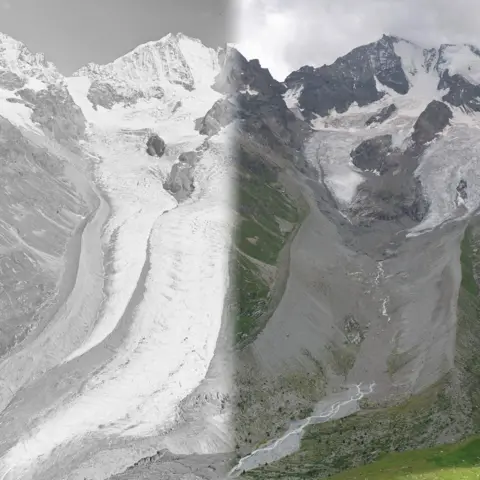Glaciers Are Vanishing: A Stark Look at Climate Change's Impact

Recent observations reveal that glaciers worldwide are retreating at an unprecedented rate due to climate change. The Rhône Glacier in Switzerland, once accessible after a short walk, is now a half-hour trek from the parking area. Matthias Huss, director of Glacier Monitoring in Switzerland (GLAMOS), has noted significant changes over the decades.
In 2024 alone, glaciers outside the polar regions lost approximately 450 billion tonnes of ice, equating to a block of ice 7km tall, enough to fill 180 million Olympic swimming pools.
The situation is particularly dire in Switzerland, where a quarter of glacial ice has melted in the last decade. Satellite images dramatically illustrate how glaciers like Rhône and Clariden have drastically shrunk.
Experts cite global warming as the crucial factor behind this alarming trend. Without immediate action to reduce greenhouse gas emissions, the future of these monumental ice formations looks bleak.
While glaciers are naturally cyclical in their size, the rapid changes observed in recent decades are attributed primarily to human activity. Glaciologists emphasize that swift action could help mitigate the ongoing loss, with potential solutions aimed at stabilizing global temperature increases.



















